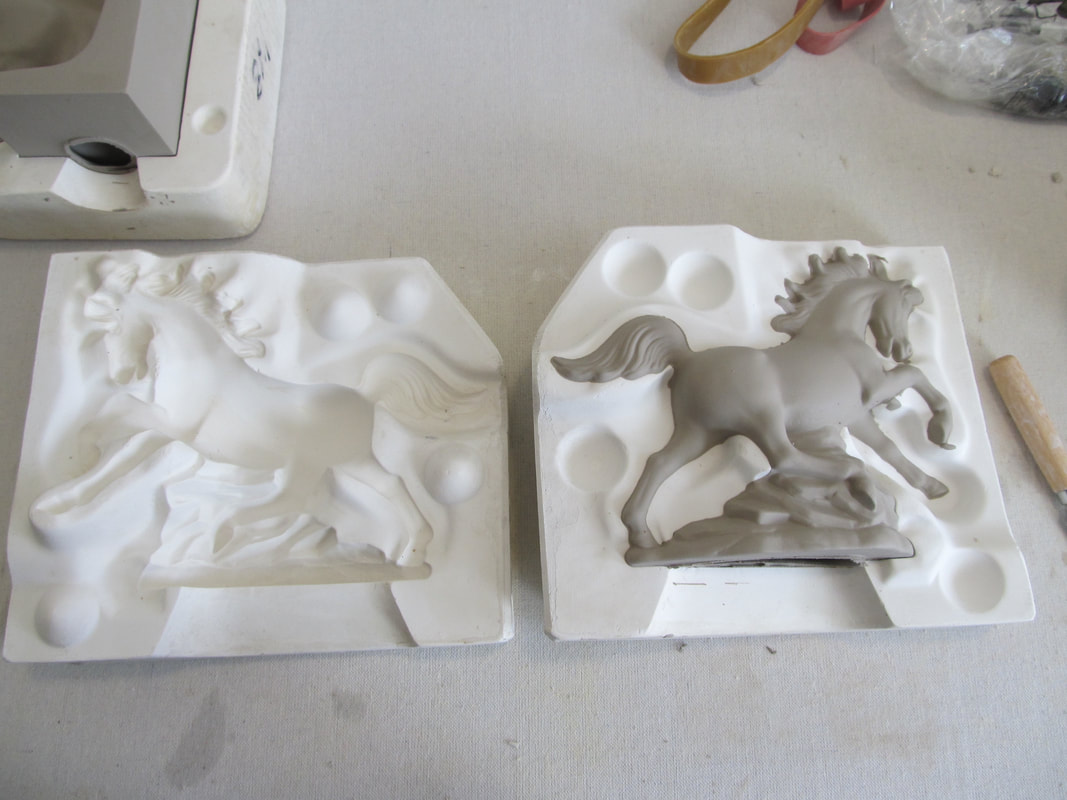Just before we moved from Richmond CA last October, a local ceramic supply store, Clay People, was offering up to 5 free slip casting molds to their customers. Not being able to resist free stuff, I had to check it out. It seems a local business was looking to off load them before they could sell the building they were in. There were thousands of them! Some were so huge and heavy, I could not even lift half of it. Seeing as we were in the thick of packing to move, the last thing I wanted to do was aquire more heavy stuff to move. I decided I could only take smaller molds. This is better anyway, as once they are filled with wet liquid clay they get even heavier!
I lucked upon this stallion mold, as well as a horse head bookend, a bird, a bunny, and a rat. With all the wild horses near by, I thought this was perfect. I was also able to give away a few plaster molds that I know longer wanted. It was a win/win.
Now some artists might think that using commercial molds it sort of cheating. I don't like to mix them in at sales and someitmes people seem a bit disappointed when I tell them it's from a commercial mold. I have made several plaster molds myself over the years of various vegetables, like squash, or other items. I utilize them a lot in my studio. I don't feel bad about using those at all. However, I still like utilizing the commercial molds. I like the idea that I don't have to make it from scratch but there is still a lot of time and effort that goes into making slip cast pieces.
In case you are wondering what the process looks like from almost the beging to the end, keep reading. Below is how the mold looks after the excess liquid slip is poured off and the form allowed to dry a day or so. Then you carefully separate the mold halves.
I lucked upon this stallion mold, as well as a horse head bookend, a bird, a bunny, and a rat. With all the wild horses near by, I thought this was perfect. I was also able to give away a few plaster molds that I know longer wanted. It was a win/win.
Now some artists might think that using commercial molds it sort of cheating. I don't like to mix them in at sales and someitmes people seem a bit disappointed when I tell them it's from a commercial mold. I have made several plaster molds myself over the years of various vegetables, like squash, or other items. I utilize them a lot in my studio. I don't feel bad about using those at all. However, I still like utilizing the commercial molds. I like the idea that I don't have to make it from scratch but there is still a lot of time and effort that goes into making slip cast pieces.
In case you are wondering what the process looks like from almost the beging to the end, keep reading. Below is how the mold looks after the excess liquid slip is poured off and the form allowed to dry a day or so. Then you carefully separate the mold halves.

 RSS Feed
RSS Feed